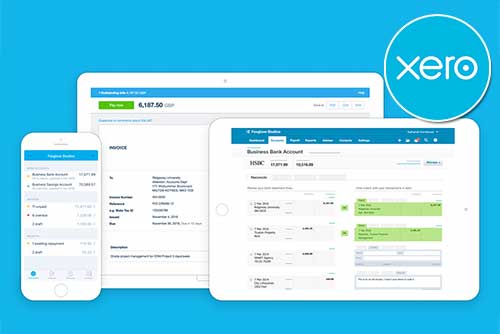How to Calculate Net Profit Margin: Mastering its Definition, Formula, and Optimisation
Understanding your business’s financial health is essential for sustainable growth and success. Among the key metrics to gauge your company’s performance is net profit margin. It serves as a critical indicator of efficiency, profitability, and overall business viability.
This article offers insights into the definition of net profit margin, its formula, and optimisation strategies.
What is Net Profit Margin?
Net profit margin, often referred to as profit margin, is a vital financial metric used to assess a company’s profitability. It measures the percentage of revenue that translates into profit after accounting for all expenses, including operating costs, taxes, interest, and other deductions.
Net Profit Margin vs. Gross Profit Margin
Gross profit margin focuses solely on the relationship between revenue and the cost of goods sold (COGS), providing insight into the efficiency of production and how much a company earns from its core operations before administrative and other costs.
On the other hand, net profit margin takes into account all expenses, including operating expenses, interest, taxes, and COGS. It offers a more comprehensive view of a company’s overall profitability by showing what percentage of each pound of revenue remains as profit after all expenses have been paid.
The Importance of Net Profit Margin
The importance of net profit margin cannot be overstated, as it affects numerous aspects of a business, from strategic planning to investor attractiveness. Here’s a detailed look at why net profit margin is so crucial:
Assessing Profitability
Net profit margin offers a clear view of what percentage of revenue is actually turning into profit after all expenses have been paid. This helps stakeholders understand how well a company is managing its operational costs and other expenses relative to its total revenue.
A consistently high net profit margin can attract more investors, as it suggests a stable and potentially lucrative investment.
Benchmarking and Competitive Analysis
Companies use net profit margin to benchmark themselves against peers within the same industry. For instance, a 10% net profit margin might be impressive in one industry and mediocre in another.
By understanding where they stand in the competitive landscape, businesses can better strategise on how to improve their operations and pricing strategies.
Guiding Internal Decision-Making
Net profit margin helps businesses identify whether they are on the right track toward financial health or if strategic adjustments are needed.
For example, a declining net profit margin might prompt a company to look into cost-cutting measures, optimisation of processes, or revising pricing strategies to ensure sustainability.
Forecasting Future Growth
The ability to generate consistent and growing profit margins is often seen as indicative of a company’s potential for future growth. Businesses with higher net profit margins have more cash flow available to reinvest in the business, be it through expansion, innovation, or improving operational capacities.
This reinvestment fuels growth, creating a positive loop that further strengthens the company’s market position.
How to Calculate Net Profit Margin
The formula for calculating net profit margin is straightforward yet powerful, providing valuable insights into a company’s financial performance:
Net Profit Margin = (Net Profit/Revenue) x 100
Where:
- Net Profit is the total revenue minus all expenses.
- Revenue represents the total income generated from sales or services.
By expressing the net profit margin as a percentage of revenue, businesses can effectively compare their profitability across different periods, industries, or competitors.
Step-by-Step Calculation
Let’s break down how to calculate net profit margin in a few simple steps:
- Identify the company’s total revenue.
- Determine the total cost of goods sold (COGS).
- Subtract COGS from total revenue to get gross profit.
- Deduct operating expenses from the gross profit to get operating profit.
- Subtract interest expenses, taxes, and any other expenses to get the net profit.
- Finally, divide the net profit by the total revenue and multiply by 100 to get the net profit margin percentage.
What Does Net Profit Margin Indicate?
Net profit margin indicates the percentage of revenue that remains as profit after all expenses have been deducted. A higher net profit margin signifies greater efficiency and profitability, suggesting that the company is adept at controlling costs and maximising income.
What is a Good Net Profit Margin?
A “good” net profit margin varies significantly across different industries, as profitability standards can be vastly different depending on operational costs, market conditions, and pricing strategies inherent to each sector.
Generally, a net profit margin that exceeds the industry average might be considered good because it indicates that a company is managing its operations more effectively than its competitors.
For example, industries with higher fixed costs such as manufacturing might typically have lower net profit margins compared to sectors like technology or consulting, where overhead is relatively low and scalability is high.
Here are some rough guidelines for interpreting net profit margins:
- 5% or less: Often considered a low margin, characteristic of high-volume, low-margin industries such as groceries or retail.
- 10%: Considered an average margin, indicative of adequate performance.
- 20% and above: Seen as a high margin, typical of luxury goods, software companies, or businesses with a strong competitive advantage.
It’s crucial to compare a company’s net profit margin to the average margins within its industry rather than to those of companies in other sectors. Trends over time in a company’s own margin can also indicate improving or declining financial health.
Strategies to Improve Net Profit Margin
Improving net profit margin is crucial for any business looking to enhance its financial health and ensure long-term sustainability. Here are several effective strategies to consider:
Cost Reduction
Cutting costs is a direct way to improve net profit margins. This can be achieved by:
- Optimising Supply Chain: Streamlining the supply chain can reduce costs related to procurement, manufacturing, and logistics.
- Reducing Waste: Implementing lean management techniques to minimise waste in production and operations.
- Negotiating with Suppliers: Seeking better terms or discounts for bulk purchases.
- Outsourcing Non-Core Activities: Outsourcing functions like IT, HR, or customer service to reduce overhead.
Increase Pricing, When Possible
Adjusting prices can significantly affect profitability, but it needs to be done carefully to avoid losing customers. Consider:
- Value-Based Pricing: Setting prices based on the perceived value to the customer rather than solely on cost.
- Dynamic Pricing Strategies: Adjusting prices based on demand, competition, and market conditions.
Revenue Diversification
Increasing the sources of income can stabilise revenue streams and enhance profit margins:
- New Product Lines/Services: Developing and introducing new products or services that complement the existing offerings.
- Expanding to New Markets: Geographical expansion or tapping into different customer segments can open up new revenue streams.
Enhance Operational Efficiency
Improving the efficiency of operations can reduce costs and increase productivity:
- Automating Processes: Using technology to automate labour-intensive processes.
- Employee Training: Enhancing employee skills and efficiency through training and development programs.
Limitations of Net Profit Margin
Understanding net profit margin is crucial in business analysis, but it’s not without its limitations. Let’s delve into these limitations and how they can impact the interpretation of net profit margin.
Industry Variability
Comparing net profit margins across different industries can be misleading. A high margin in one industry might be the norm, while in another, it could signal exceptional performance.
For instance, tech companies often have high net profit margins due to low overheads. On the other hand, retail businesses, with their high operating costs, usually have lower margins.
A high net profit margin isn’t always a sign of a healthy company, and a low one doesn’t necessarily mean trouble. It’s all relative.
Does Not Account for Scale
Net profit margin measures profitability as a percentage of revenue, but it doesn’t provide insight into the actual size of a company’s profit or operations.
A small company could have a high net profit margin but still make less total profit than a larger company with a smaller net profit margin.
Capital Structure Influence
The metric is influenced by a company’s capital structure. For example, in companies that have strategically taken on debt to fuel growth, their core operations might be highly efficient and profitable, but their net profit margins could still appear weak due to the high interest costs.
So the net profit margin doesn’t necessarily reflect poor operational performance but rather the cost of financing.
Mastering Net Profit Margin
Net profit margin is a key indicator of a company’s financial health, providing insights into its profitability and operational efficiency. However, it’s important to remember that net profit margin is just one piece of the puzzle. It should be used in conjunction with other financial metrics for a comprehensive view of a company’s performance.
If you’re looking to improve your understanding of financial metrics like net profit margin and how they impact your business, consider Mazuma’s accounting services.





















